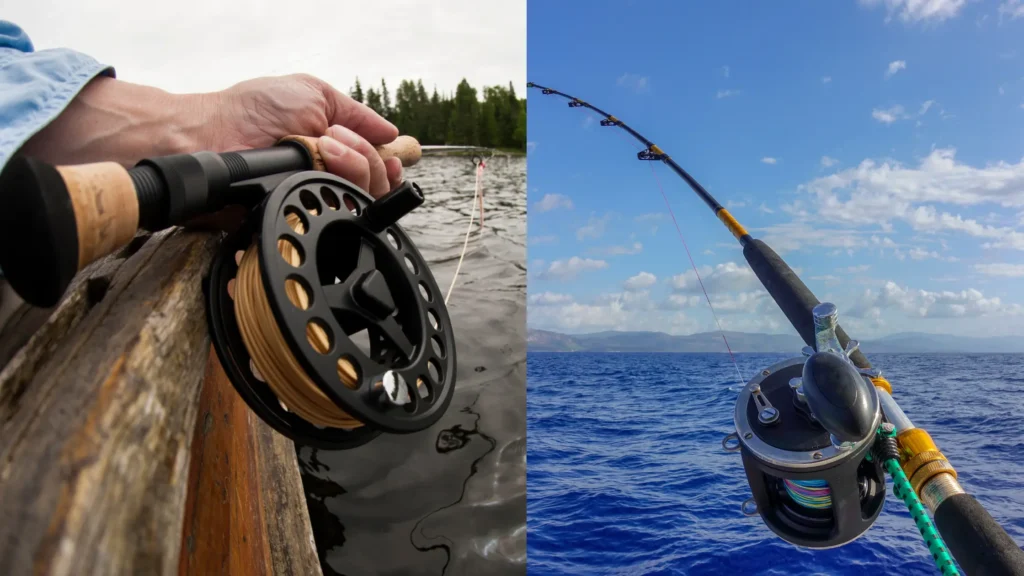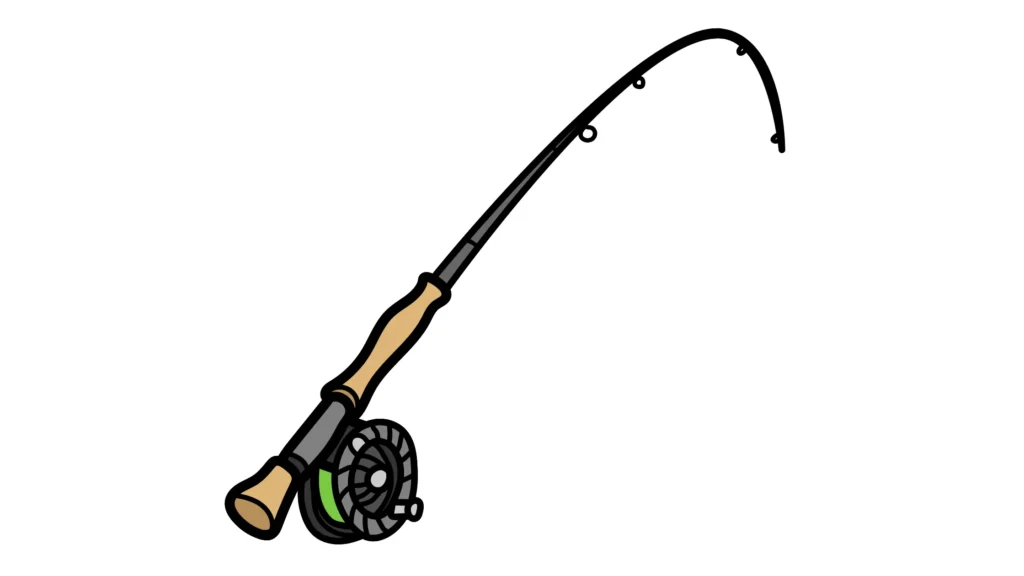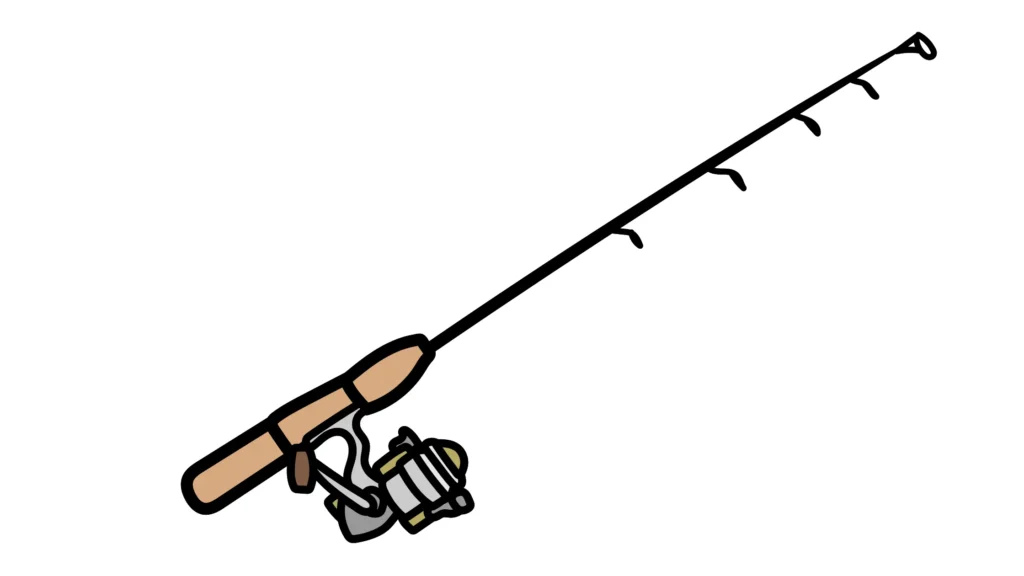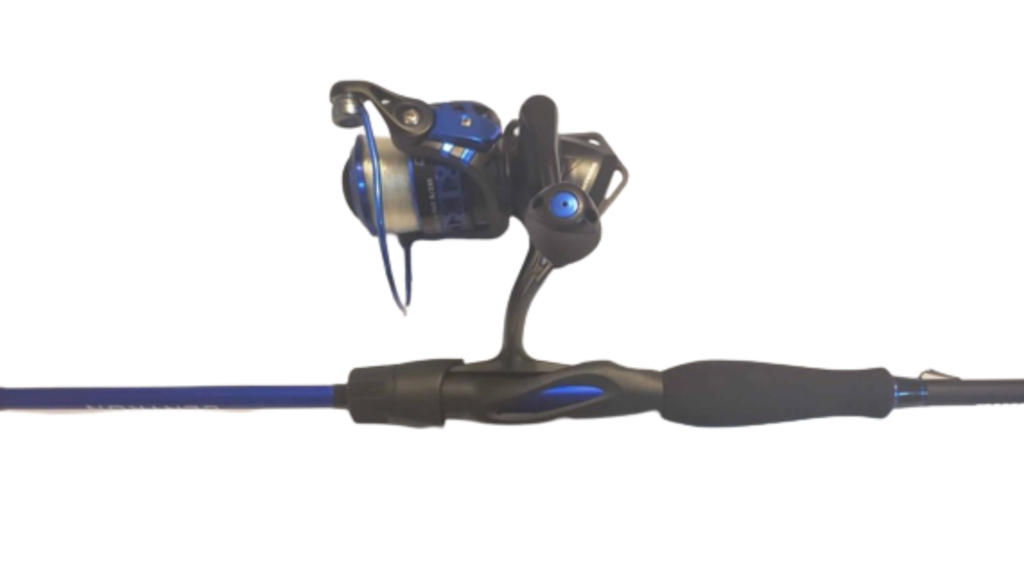When the topic of fishing comes up, many people might think there’s only one type of fishing rod. However, that’s far from the truth. Differentiating between fly fishing and regular fishing rods is essential, as each type of rod is designed for specific fishing techniques, gear, and fish species.
Fly fishing and spin fishing (commonly referred to as regular fishing) have their unique sets of advantages and challenges. In this guide, I’ll dive into the key differences between fly fishing and regular fishing rods.

Table of Contents
What’s the Difference between Fly Fishing and Regular Fishing Rods
Here’s a summary of the key differences between fly fishing and regular fishing rods:
| Feature | Fly Fishing Rod | Regular Fishing Rod (Spinning/Baitcasting) |
|---|---|---|
| Line Weight | Light, specialized fly line | Heavier, monofilament or braided line |
| Lure/Bait | Artificial flies | Lures, live or artificial bait |
| Casting Style | Delicate, precise presentations | Longer, heavier casts |
| Target Species | Trout, specialized fish species | Wide range of fish species |
Understanding the differences between Fly fishing vs regular fishing or a Fly fishing rod vs regular fishing rod helps you choose the right equipment and technique for your next fishing trip. Although fly rods and spinning rods excel in their specific niches, it’s crucial to pick the right rod and gear based on the fish species you’re targeting and the fishing conditions.

Fly fishing rods, or fly rods for short, are specifically designed for the art of fly fishing. This particular technique involves the use of lightweight, artificial flies as bait for fish, usually trout. These rods allow for more precise control when casting the fly line, leader, and tippet into rivers and streams, mirroring the natural movements of insects on the water’s surface. Fly rods have a more flexible bend and a relatively lower line weight, making them ideal for casting lightweight flies.

On the other hand, regular fishing rods, which include baitcasting and spinning rods, generally cater to spin fishing techniques. These rods use lures instead of flies, and they’re typically designed to work with a spinning reel or baitcasting reel. With a spinning reel, you can have open-faced, closed-faced, or trigger reels that vary in their mechanisms to release the line. Baitcasting reels, however, need more skill to use them effectively because you control the flow of the fishing line with your thumb as you cast. Both types of regular fishing rods are suitable for a wider range of fishing environments and fish species, and require different equipment than fly fishing.
In summary, here are the main differences between fly fishing and regular fishing rods:
- Fly rods are lighter, longer, and more flexible than spinning rods
- The materials used for fly rods are typically different from those used in regular rods
- Fly fishing uses fly reels, while regular fishing uses spinning or baitcasting reels
- Additional specialized equipment, like waders and flies, are needed for fly fishing
Understanding Fly Fishing Rods
Fly fishing is a distinct angling method that sets it apart from regular fishing techniques like spin fishing and baitcasting. To truly understand the difference between a fly fishing rod and a regular fishing rod, let’s delve into the features and components that define them.
Fly fishing is a technique that involves using lightweight artificial flies to mimic insects and other sources of food found in nature. The main goal is to entice the fish into biting the hook. Fly fishing rods are specialized tools designed to cast these minute, weightless flies with precision. They’re commonly used for targeting trout and other species in rivers, but also have applications in still water and saltwater scenarios.
A key feature of a fly rod is its ability to handle different line weights. In fly fishing, it’s the line that gives the casting weight rather than the lure or bait. Fly rods are generally longer and more flexible than spinning rods, allowing for better line control while casting. Their makeup consists of a fly reel seat, stripping guide, snake guides, and tip-top. The rod is paired with a specialized fly line, a leader, and a tippet to help the angler achieve a delicate, precise presentation of their artificial fly.
The Basics of Regular Fishing Rods
Regular fishing rods, such as spinning rods and baitcasting rods, are designed to cast heavier lures and bait with the help of a weighted line. They typically have a spinning reel or baitcasting reel attached to the rod itself.
Spinning reels can be open-faced or closed-faced, whereas baitcasting reels typically have a trigger mechanism for greater casting control.
Spin fishing utilizes spinning rods and baitcasting rods, each designed for different purposes. Let’s dive into the details of these two types of regular fishing rods.
Spinning Rods:
Spinning rods are an excellent option for anglers, especially beginners. They are versatile and easier to use, making them perfect for targeting various fish species. Key characteristics of spinning rods include:
- An open-faced spinning reel that hangs beneath the rod
- Guides, or eyelets, are generally larger and face downward, allowing for smoother casting
- Capable of handling lighter line and lures
Spinning rods work well with artificial or live bait, making them a popular choice when seeking out trout and other game fish in rivers and lakes.
Baitcasting Rods:
Baitcasting rods cater to more experienced anglers who require precise control and longer casting distances. Here are some features of baitcasting rods:
- A closed-faced reel sits on top of the rod
- A trigger grip at the base of the rod handle provides extra control
- Works best with heavier line and lures
Baitcasting rods are optimal for targeting larger fish species and handling thicker cover.


While both spinning and baitcasting rods are considered regular fishing rods, there are distinctions to note. The table below highlights some key differences between spinning rods and baitcasting rods:
| Feature | Spinning Rods | Baitcasting Rods |
|---|---|---|
| Reel Type | Open-faced | Closed-faced |
| Reel Position | Below the rod | Above the rod |
| Handle | Standard | Trigger grip |
| Target Fish Species | Smaller to medium-sized fish | Larger fish |
When selecting the right rod for your needs, it’s crucial to consider your skill level, fishing technique preferences, and target fish species. Also, for those who enjoy wading into the water, investing in high-quality waders and additional equipment is key for a successful fishing experience.
To wrap up this section on regular fishing rods, it’s essential to remember that spin fishing offers diverse options for anglers, from versatile spinning rods to more specialized baitcasting rods. Whether you choose fly fishing or regular fishing, understanding the basics of each method will enhance your enjoyment on the water.
Comparing Materials and Construction
It’s essential to understand the difference between fly fishing rods and regular fishing rods to choose the right equipment for your fishing style. In this section, I’ll compare the materials and construction of these rods to help you make an informed decision.
First off, let’s look at the materials that make up fly rods and spinning rods. Fly fishing rods are usually made from graphite, fiberglass, or bamboo. These materials allow the rod to be lightweight and flexible, essential for casting fly lines and accurately mimicking the movement of insects on the water’s surface. On the other hand, regular fishing rods can also be made from graphite, fiberglass, or combo materials. This makes them more versatile for different types of lures and lines.
- Fly rods: Graphite, Fiberglass, Bamboo
- Spinning rods: Graphite, Fiberglass, Combo materials
Read More: Why is fly fishing so addictive? & Is Fly Fishing All in the Wrist?
Final Thoughts on Choosing the Right Rod
When it comes to picking the perfect fishing rod, understanding the differences between fly fishing and regular fishing rods is essential. Here’s a recap of some essential points:
- Fly fishing typically targets trout and is often practiced in rivers, while regular fishing (spin fishing or baitcasting) covers a wide variety of fish species and habitats.
- Fly rods are designed to cast flies rather than lures, whereas spinning rods and baitcasting rods are made for casting lures and bait.
- Fly fishing gear consists of a fly rod, a line with a specific line weight, a leader and a tippet, while spin fishing requires a spinning rod, a line, and a reel – either open-faced or closed-faced.
- Fly fishing relies on using artificial flies that imitate insects and other natural food sources, while spin fishing and baitcasting employ diverse lures and types of bait.
When choosing the ideal rod for your fishing adventures, keep the following factors in mind:
In conclusion, it’s important to carefully consider the differences between fly fishing rods and regular fishing rods when outfitting yourself with the right equipment. So whether you’re an avid trout fisher looking to embrace the art of fly fishing or a versatile angler who enjoys exploring a variety of techniques, selecting the right rod is an essential step in ensuring you have the best possible experience out on the water.
